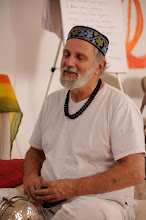A friend wrote saying she had “so
many questions,” and mentioned a few:
Why do I believe so profoundly in God?
To be real straight about it, I
have to say that I don’t really “believe” in God. It’s not a belief. It’s just
something that’s present, like a tree or a house or a basketball. You might see
a basketball sailing through the air toward the basket. But you wouldn’t say
you “believe” in basketballs. They’re just there at the gym or out on the
playground. Nothing to “believe.”
When I was 28 I was on Senator Bob
Kennedy’s campaign team and staff as one of his writers. I thought we had a
good chance of winning the Presidency and really stopping the Viet Nam War and
healing the nation’s race tensions, and lots more good stuff. I liked the man
and admired what he was up to. When he was assassinated, I was hurt and stunned
about the way things go.
Instead of riding on the funeral
train to Arlington Cemetery with the rest of the campaign team, I took some LSD
and had a friend read to me from the Tibetan Book of the Dead, a
spiritual manual for passing through the bardos (astral realms, worlds)
after physical death, but here rewritten for trippers in contemporary language
by Lama Govinda and Richard Alpert (who in a few years would become Baba Ram
Das). As a Time Magazine Correspondent during the previous years, I’d
been covering these investigations with psychedelics and the cultural
transformation simultaneously occurring. In fact I had experimented somewhat
myself, as a reporter.
During that LSD trip in June,
1968, while listening to the teachings of Buddhist sages about focusing on the
white light beyond the bardos, I entered a state of diamond
consciousness and remained in that awareness for some time. I saw that the
universe is made of love, an ecstatic, beatific orgasm of love on going and on
going. And all this stuff of our daily lives with its swirls and melodramas is
but a mixing of colors on the surface of the waves of this effulgence.
After I came down to normal
day-to-day consciousness, I knew I had come upon something rich and amazing
that I must investigate somewhere somehow. And the puzzle that immediately
obsessed me, I see now looking back, was the piercing conundrum of a world made
entirely of love and my boss getting killed right in front of me when we were
just about to save the whole planet.
Having pursued this zen puzzle for
many years and under the guidance of wise people, I have come to see that it’s
in the paradox that transcendence occurs. And that “God” is a word we use to
allude to a state of consciousness with an air of sacredness. As our eyes
continue to open, as we continue to awaken -- we can see and feel that
sacredness more and more of the time, even in the midst of our day-to-day
lives.
She also asks, Who made the
connection between the Kabbalah teachings
and the Yoga philosophy?
I, for one. Others too, I’m sure.
Anyone with a strong mystical bent, who is deep into Yoga and enjoys scripture
study of the Old or New Testament, could easily make the connection; that is,
see the same wisdom offered in only slightly different metaphors.
She asks me to elaborate on the
sefirot, the ten infinite depths.
It’s an image and language that
can be used to begin to understand and become ever more acquainted with
what you might call “the world out there of profound magnitude.” It’s really
symbol language. A good symbol is like a good piece of music or a good
painting. It has many levels, many faces -- but all related with one
another and together offering a delicious marble cake of wisdom and revelation.
Among the ten sefirot are
the six directions: east, south, north, west, downwards and upwards. These are
each endless, of course. There’s no end to east. Associated with the east is
dawn, and the entrance to the sacred temple. Each depth is a cluster of symbols.
By becoming familiar with the images and connotations of each sefirah,
one begins to see them more and more often in one’s daily life.
Familiarity with the scripture is
useful here. In the Book of Exodus when the children of Israel are
enslaved in Egypt, but are in the process of being freed to cross the Reed Sea
and set out for “a promised land,” we learn that an east wind carries in
locusts that cover the land. This is one of the ten plagues that move Pharaoh
to free the people. At the shore of the sea God uses a “strong east wind”
that parts the sea into high walls of water on our right and on our left as we
pass over the sea on dry ground, traveling from bondage to freedom.
See, it’s a symbol language and
image game, very free-flowing. Ten plagues. Ten infinite depths, coincidence?
As the late George Carlin used to say: Twenty-four hours in a day. Twenty-four
beers in a case, coincidence?
Does this help to keep you going
on this investigation? I’ll be glad to show you the way, much as I know. I’m
not that far along myself. I’m just a beginner.
Don’t make any of this
SIGNIFICANT. It’s just a game, but it’s a holy game.
What fun for us! Go deep. Fly
high.

